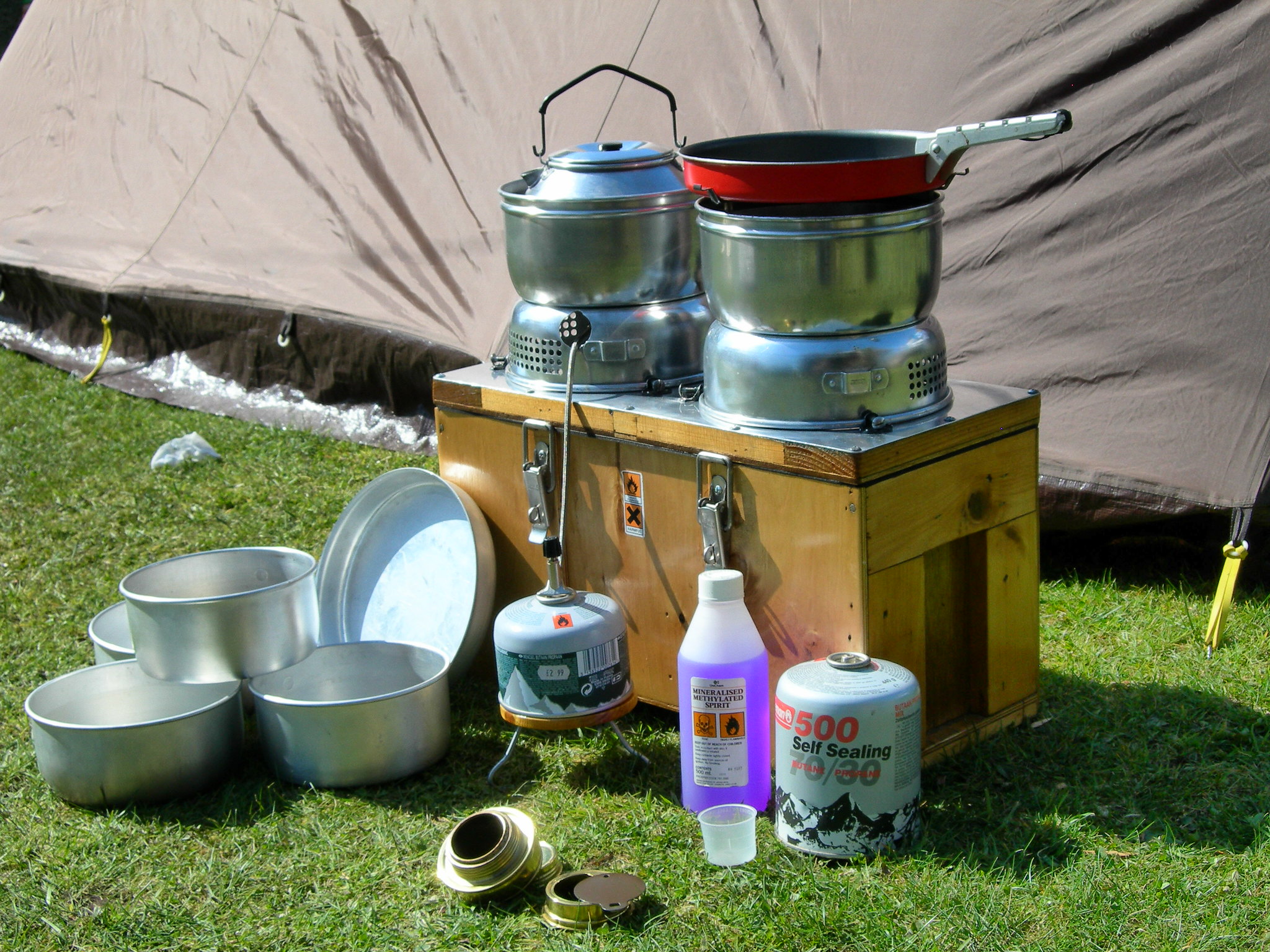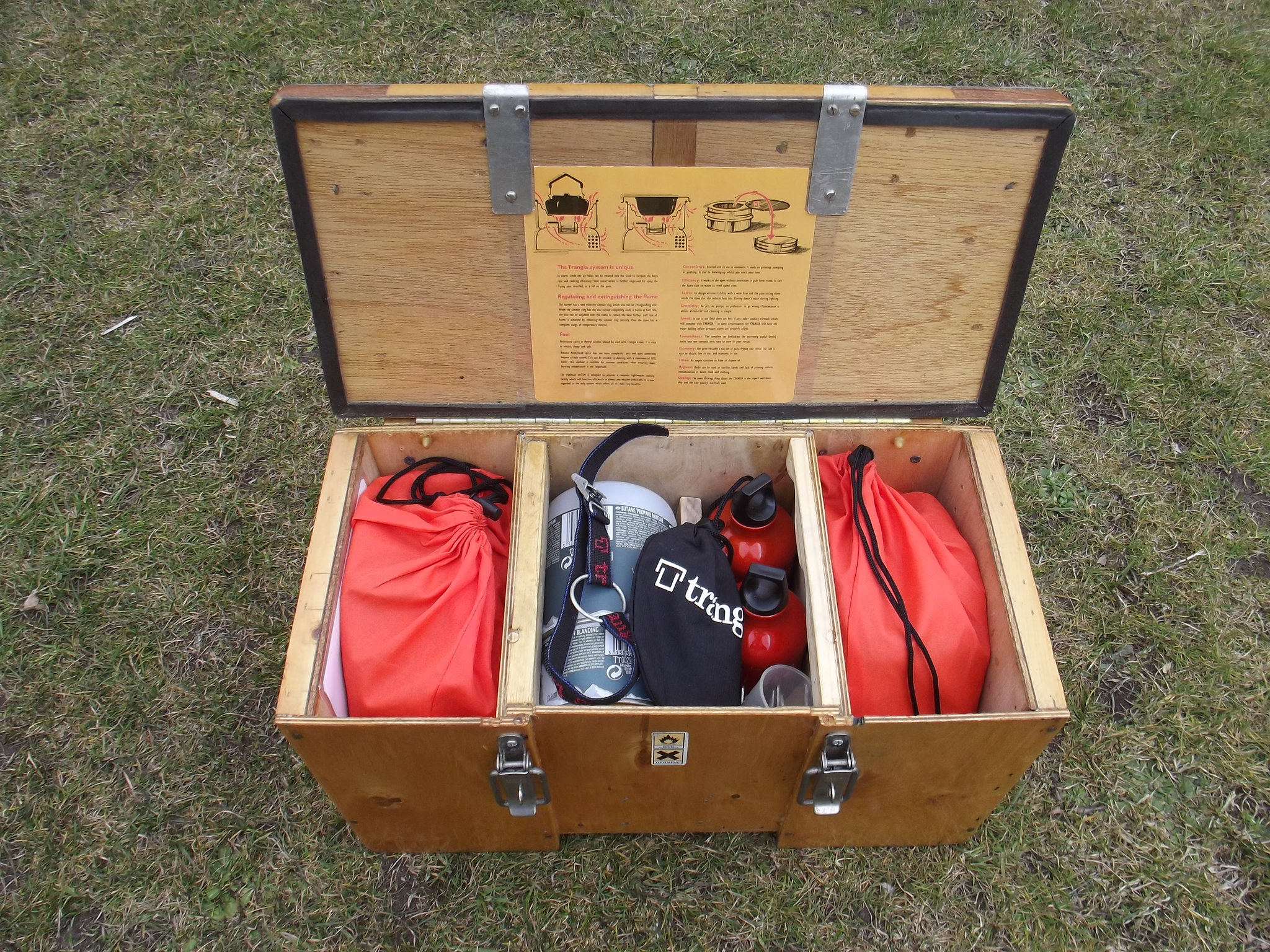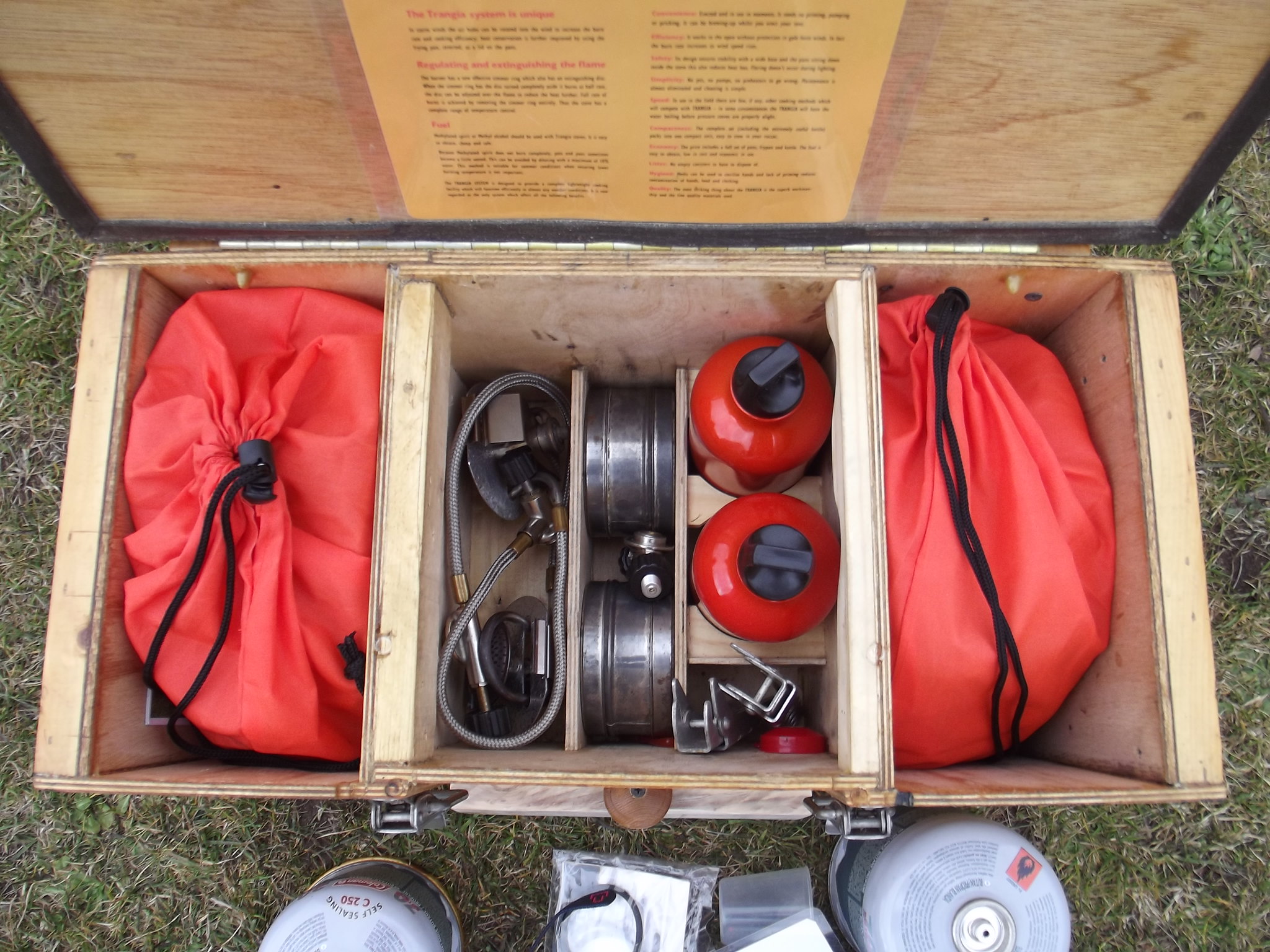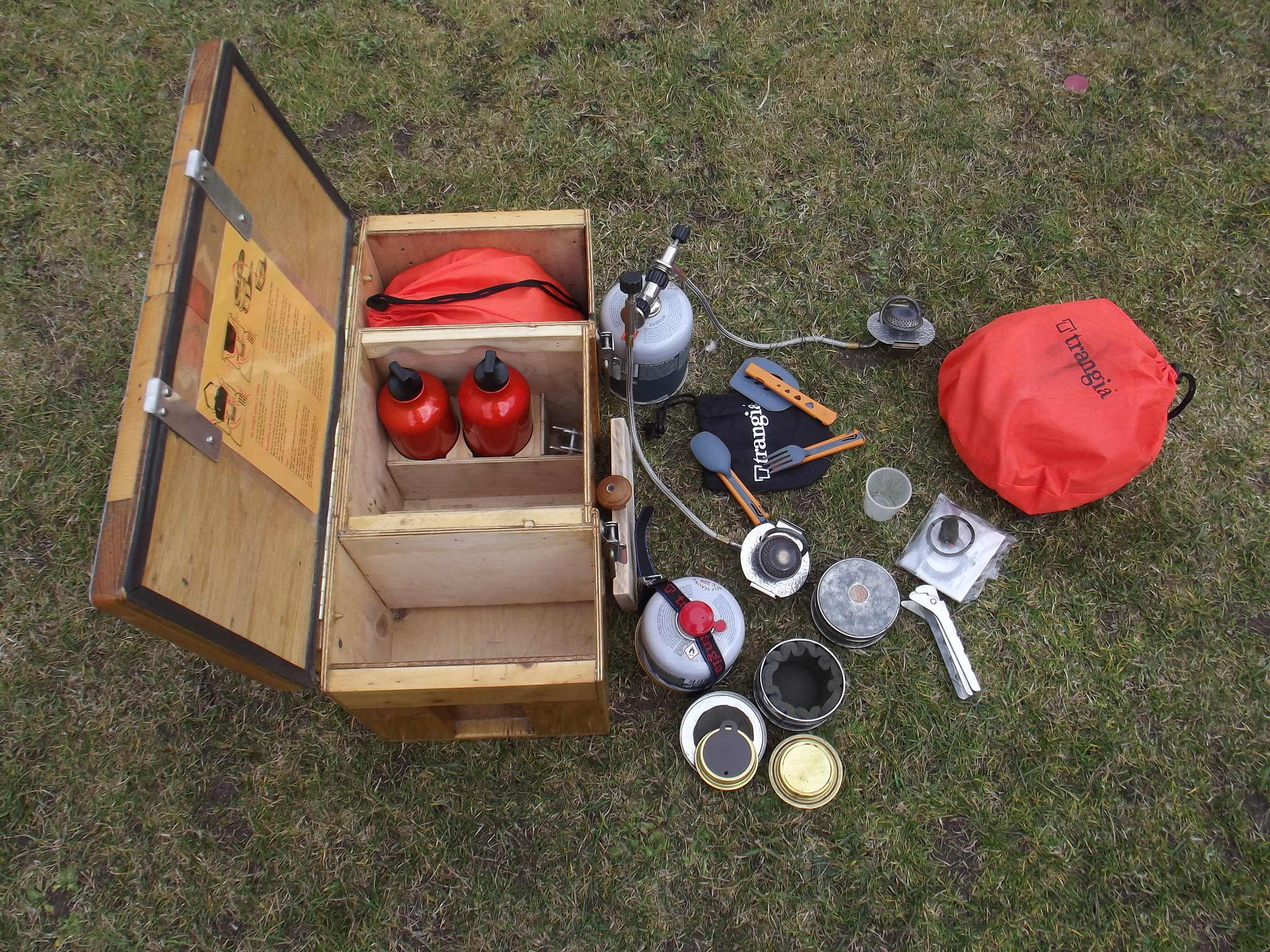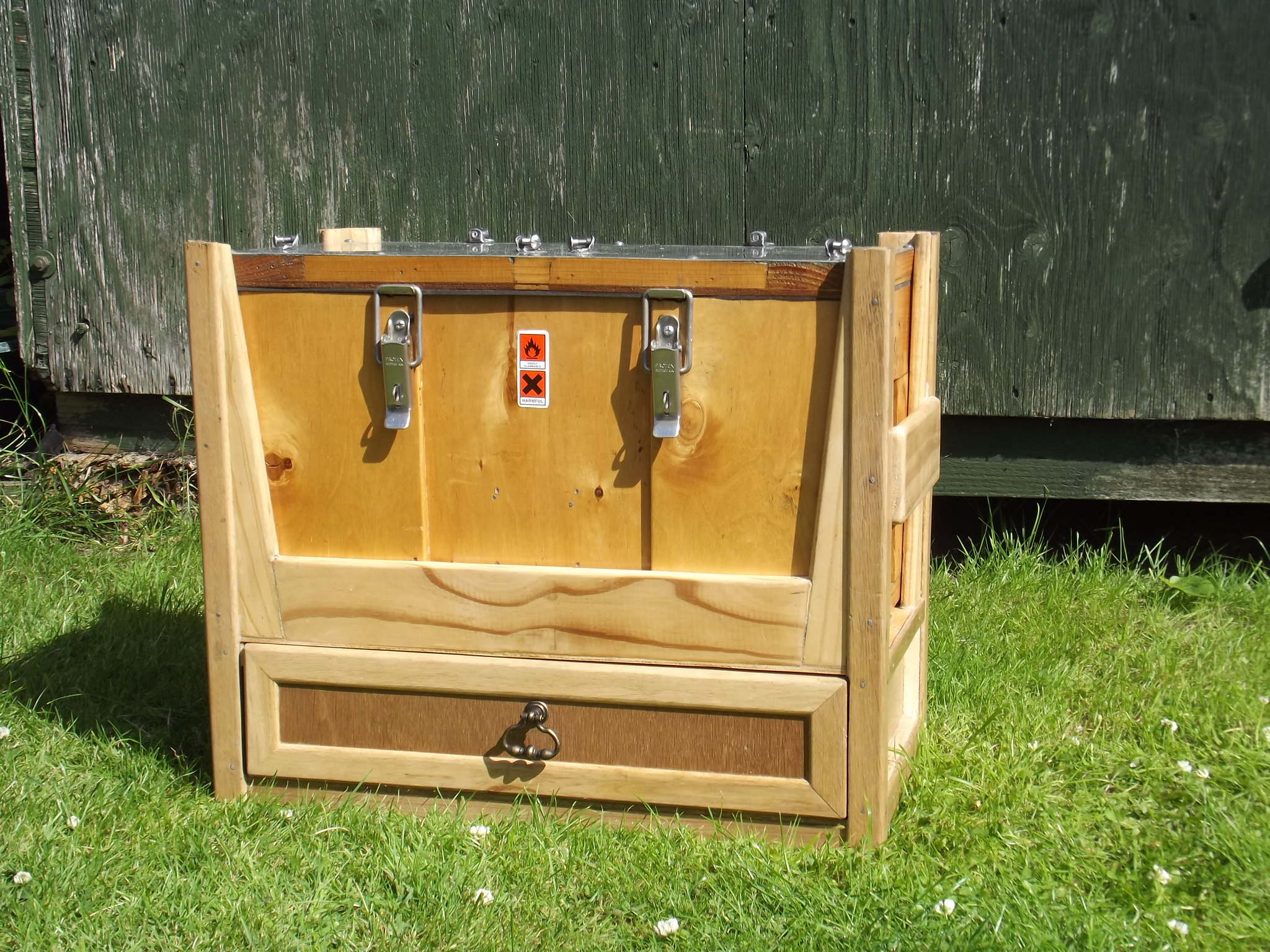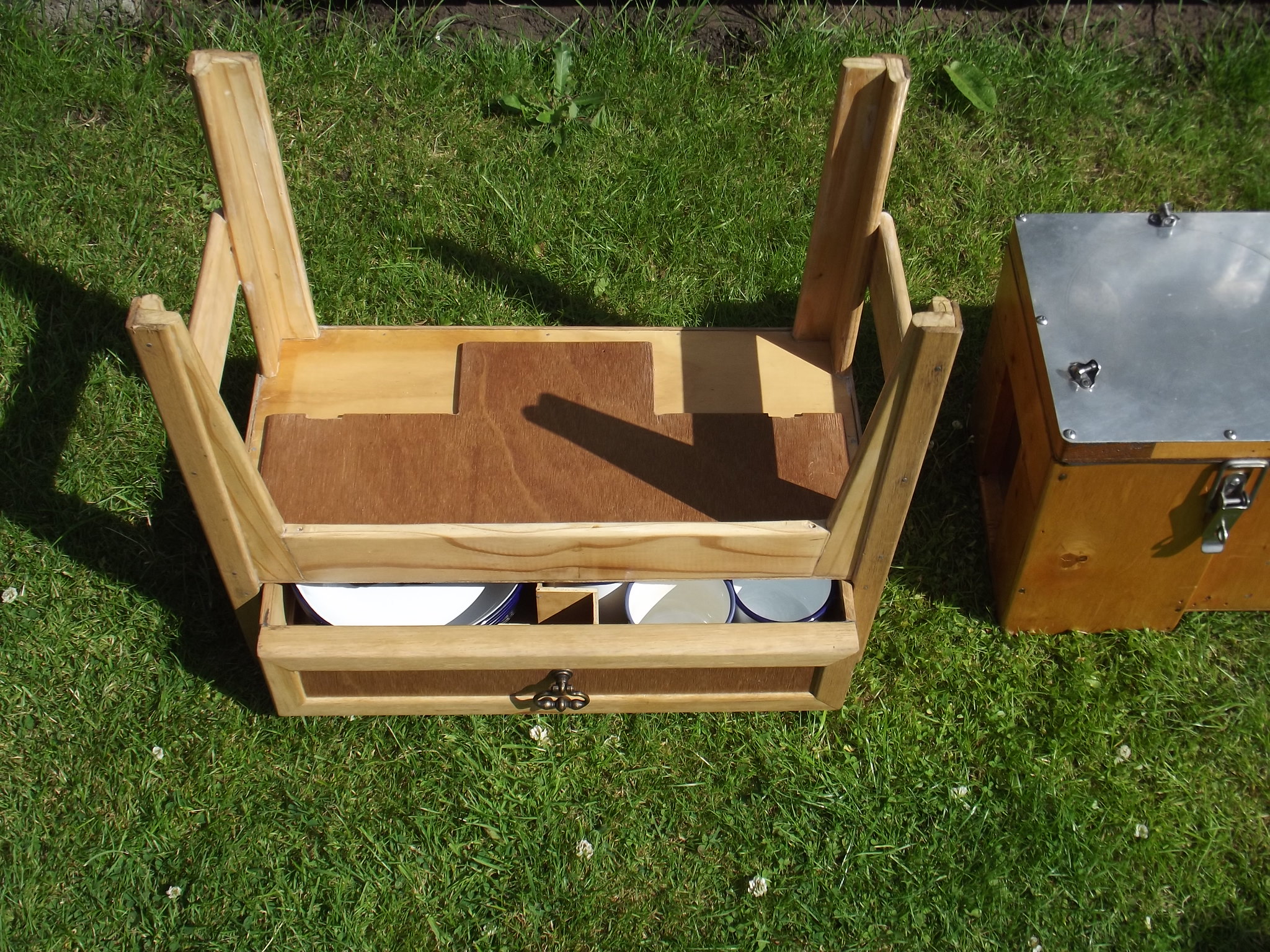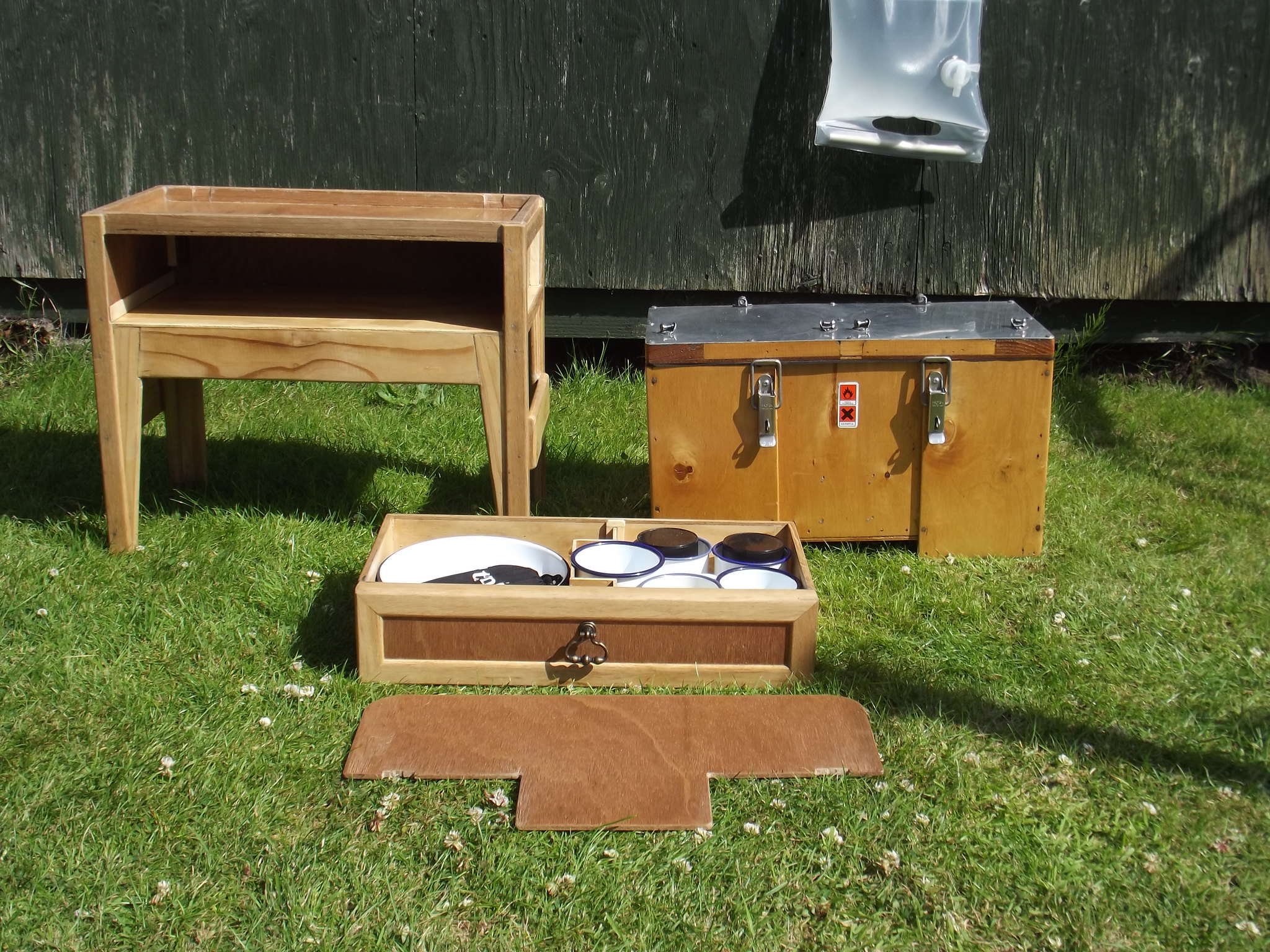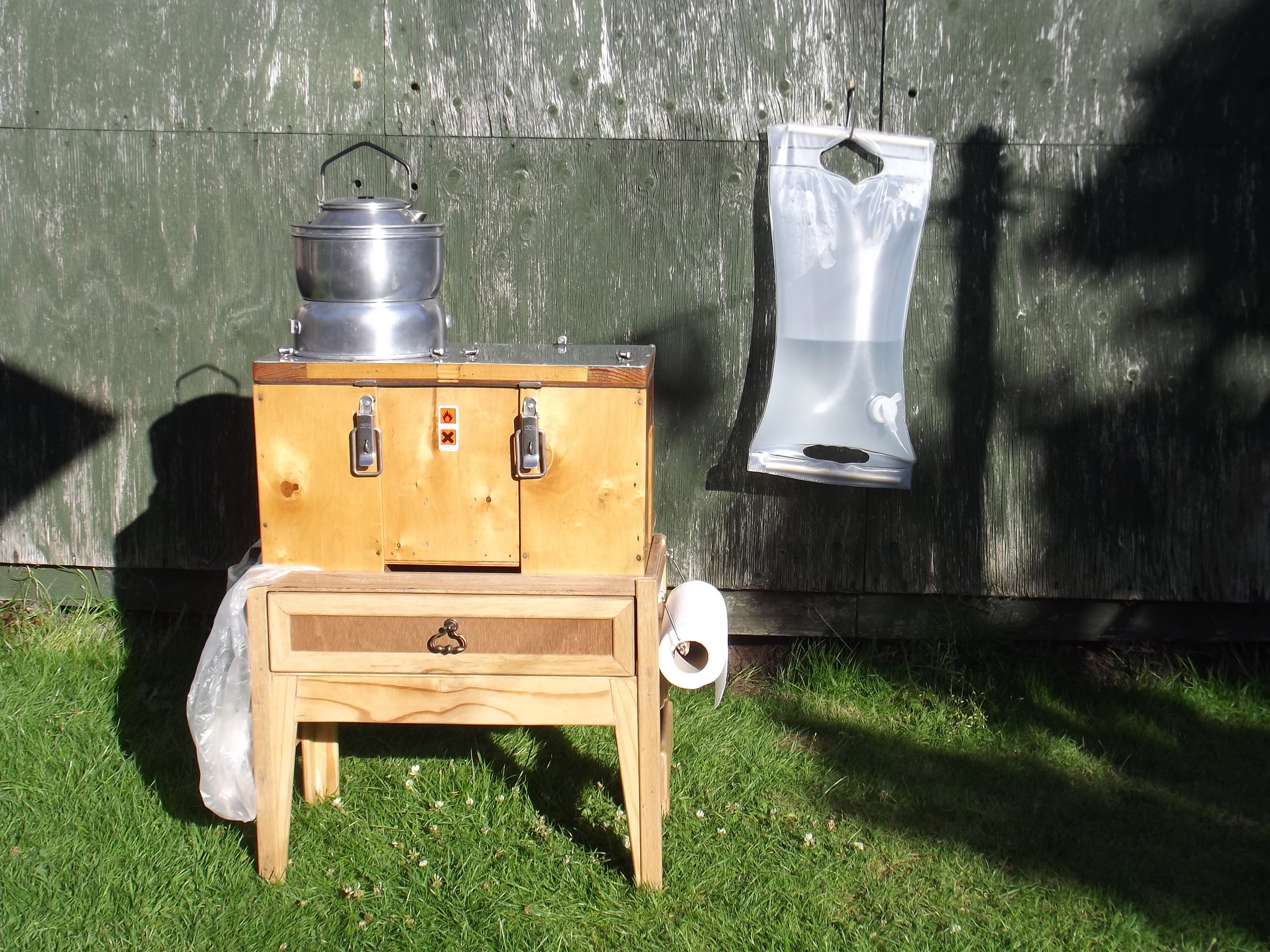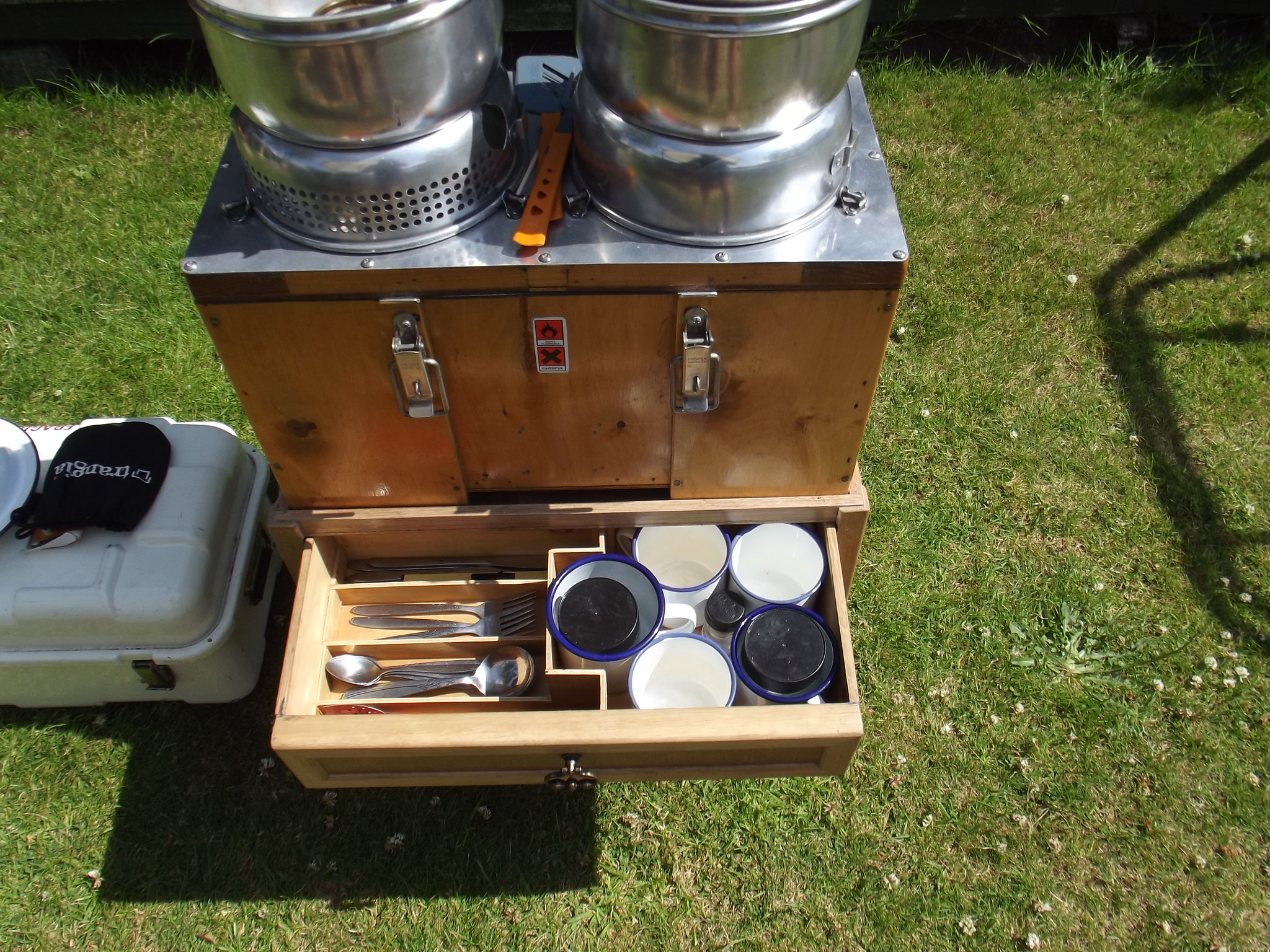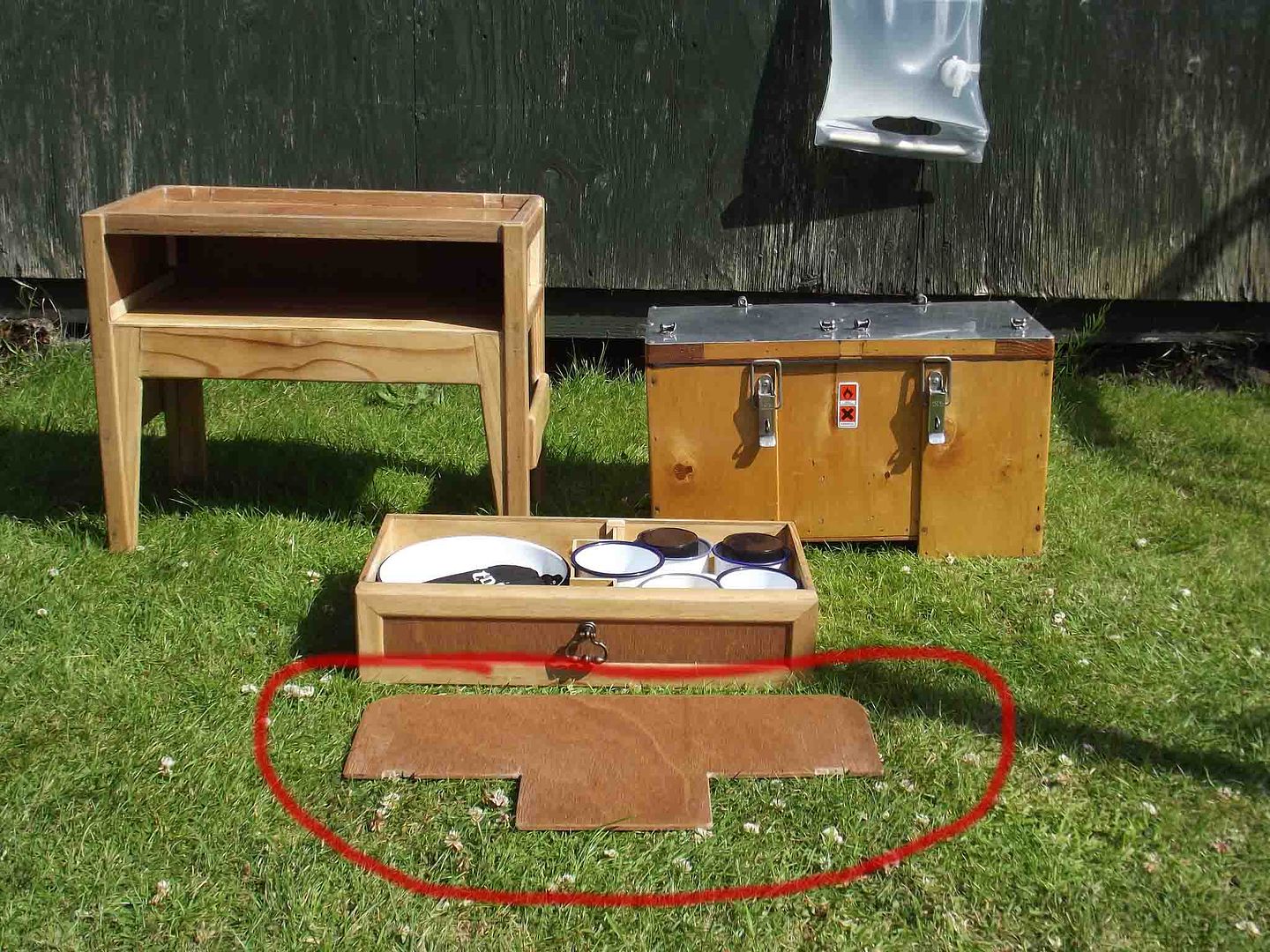May late 70s. so long ago i walked around the Yorkshire dales doing a gold D of E exped. Carrying an external frame rucksack with a shared cotton inner and fly vango force 10 with a Peter Storm orange neoprene waterproof in a 2nd hand pair of Hawkins boots my brother loaned me. Wooly jumper with Butka wool shirt, vest with no dehydrated foods except cadburys smash potato how much has changed. multi layering isnt something new really. The only kit then and still now is the good old Trangia meths stove and pots. Apart from a teflon coating pretty much the same as was way back. The gas fitting is a stunning piece of kit with boil times lower than many more recent stoves.
The huge leap forward that possibly made the biggest impact was Goretex. although invented 69-70 didnt hit outdoor clothing til mid 70s into the later part of the decade. Early reviews suggested it wouldnt work for everyone. Really? Back in those days manufacturers were fewer. Living in London for example good mountaineering, hillwalking shops were confined to the YHA off the strand, a trip to Chancery lane to Blacks or Alpine Sports or Lawries place nr Marylebone. Berghaus in the NE or Mountain equipment in the peak were the British leaders in high quality kit usually at a cost. They soon produced first jackets and other clothes to quickly follow in this new wonderful waterproof breathable kit. Early production wasnt great with durability problems but these as well as high cost which didnt appear to drop anyway soon improved. By 83-86 other manufacturers jumped on board. with sympatex, paramo, buffalo pertex with a pile fibre under all hitting the market.
This brought a deluge of new companies from home and from abroad keen to grab a slice of the market. Names to remember include Saunders, Phoenix, Snowdon mouldings, Wintergear and Ultimate whose sleeping bags rivalled Mountain Equipments Redline, Snowline and Iceline. The US companies Chouinards Black Diamond/Patagonia and North Face particularly produced some well made kit that was competing.
Along came the Howcrofts with Rohan striders about 1980 stole the market with a product that was a stretch brush nylon that for winter use was considered the way forward. Early summer lightweight trousers they produced received much criticism to begin considered to light yet they took off and other manufacturers followed suit.
With huge numbers now taking to the hills this was a massive boom market and shops seemed to open weekly. Suddenly Joe Browns in Llanberis had competition along with all the old established stores in mountainous areas.
Tent manufacturers in those early days were few with Vangos force 10s and Blacks made in Greenock the leaders. Most 70s pictures for example of Everest or any Himalaya base camp had Blacks tunnels on show with their box tent a heavy tube designed by McInnes used higher up. Blacks suddenly produced an A frame, nylon that pitched outer first and a huge catalogue of domes, tunnels A frames followed. Some great tents that served the new hillwalkers or hikers well.
Spacepacker by Saunders with Phoenixs Phreerunner single hoops reducing weight considerably. Sadly many of these manufactures are no longer with us for reasons i dont know.
Fleece came along and made the wooly jumper redundant with holofill sleeping bags very late 70s and clothing by 1980 starting to sell.
Thermarests came along at this time as well being another invention to improve comfort outdoors.
Boots have improved beyond belief. My first Mountain boot made by Galibier were heavy, stiff and needed constant attention to retain waterproofing.
Poles to reduce strain on joints, titanium, a new breed of stoves, sealskinz socks to name a few and of course the GPS.
So whats has all this got to do with todays reader if any lol or bushcrafter.
I suggest quite a lot.
The outdoor industry suggest 2013 sales worth £1.42bn at point of sale. 21-23k employed in the sale of this kit. hmmm. all very experienced. Not. They want our hard earned cash. This does not even include crossover sports like mountain biking.
I suggest many manufacturers that have started out like many businesses with ideals about products are now just mass produced where sales figures and targets rule. Over these long decades i personally have used some fabulous kit that now i wouldnt recommend to anyone.
A purchase from a huge well know company around two years ago of a goretex lightweight jacket was washed a couple of weeks ago for the first time in months and after washing at 40o delicate the taped seams all came off. So i have to get some good old rubber glue and sit and re proof seams. I have been told now Goretex will not work much past eight years. I own clothing double that age that still works fine. Just a re proof couple of times a year.
So the kit sales and issues to bushcrafters.
Many i notice like the military camo type clothing from where ever they can find good value to blend in as it were with the natural enviroment. This is financially usually low compared to other outdoor purchases and this type of kit if proofed and worn with good underlayers for most works very well. Reading posts many here enjoy the challenge of finding bargain kit and why not?
The important factor to consider particularly for those new to this and getting out a bit not twenty mins from the car is the question.
What if my kit fails?
Will i be faced with a cold night? Will i get a bit wet? Could i die?
The odd idiot walking up Snowdon in summer in jeans and T shirt with his girlfriend if the weather turns when they are near the summit and they dont get help may die. Fact!
An experienced outdoor bushcrafter camped an hour from the road in UK Feb in lower than average temps if kit fails can always build up or re start the fire and sit it out for example. maybe wet. uncomfortable, wait til morning perhaps but none the worse.
A saying some suggest started in Lympstone at RM , "There is no such thing as bad weather just bad kit" maybe has merit but not at huge cost.
There is nothing like beating your kit up with an adventurous trip to find out how your kit performs. Doing a winter ML snowholing for two nights in the Cairngorms will soon sort if your kit is up to the task. We have to rely more on each other for genuine advice and reviews as the retail market floods with inexperienced staff still in their teens trying to sell you kit they have never used.
In recent years i have done some Gold exped D of E training for Independent schools and 17/18yr olds turn up with kit worth close on a thousand pounds. Its laughable. So continue to review. Be critical. If you abuse kit say so.
In conclusion. If kit fails what are consequences???
What kit we choose is a personal thing still but really what matters is being out there. doing it. enjoying it.
I personally prefer a Merino wool or old HH lifa next to the skin. An old Cashmere jumper next surprisingly. very light. warm. very efficient. Goretex Jacket with a proofed 5.11 pair of trousers with no Waterproof trousers. thats my spring/autumn clothing layer system.
If you are going into the arctic in winter do you splash out on a new 30 below sleeping bag at huge cost. If its a walk in particularly hauling can you use a Brit issue Arctic bag with a lightweight synthetic bag designed to go down around O with a thin fleece liner as well that with cunning you can put together quite cheap.
There is still some great kit out there but a lot of rubbish as well.
The huge leap forward that possibly made the biggest impact was Goretex. although invented 69-70 didnt hit outdoor clothing til mid 70s into the later part of the decade. Early reviews suggested it wouldnt work for everyone. Really? Back in those days manufacturers were fewer. Living in London for example good mountaineering, hillwalking shops were confined to the YHA off the strand, a trip to Chancery lane to Blacks or Alpine Sports or Lawries place nr Marylebone. Berghaus in the NE or Mountain equipment in the peak were the British leaders in high quality kit usually at a cost. They soon produced first jackets and other clothes to quickly follow in this new wonderful waterproof breathable kit. Early production wasnt great with durability problems but these as well as high cost which didnt appear to drop anyway soon improved. By 83-86 other manufacturers jumped on board. with sympatex, paramo, buffalo pertex with a pile fibre under all hitting the market.
This brought a deluge of new companies from home and from abroad keen to grab a slice of the market. Names to remember include Saunders, Phoenix, Snowdon mouldings, Wintergear and Ultimate whose sleeping bags rivalled Mountain Equipments Redline, Snowline and Iceline. The US companies Chouinards Black Diamond/Patagonia and North Face particularly produced some well made kit that was competing.
Along came the Howcrofts with Rohan striders about 1980 stole the market with a product that was a stretch brush nylon that for winter use was considered the way forward. Early summer lightweight trousers they produced received much criticism to begin considered to light yet they took off and other manufacturers followed suit.
With huge numbers now taking to the hills this was a massive boom market and shops seemed to open weekly. Suddenly Joe Browns in Llanberis had competition along with all the old established stores in mountainous areas.
Tent manufacturers in those early days were few with Vangos force 10s and Blacks made in Greenock the leaders. Most 70s pictures for example of Everest or any Himalaya base camp had Blacks tunnels on show with their box tent a heavy tube designed by McInnes used higher up. Blacks suddenly produced an A frame, nylon that pitched outer first and a huge catalogue of domes, tunnels A frames followed. Some great tents that served the new hillwalkers or hikers well.
Spacepacker by Saunders with Phoenixs Phreerunner single hoops reducing weight considerably. Sadly many of these manufactures are no longer with us for reasons i dont know.
Fleece came along and made the wooly jumper redundant with holofill sleeping bags very late 70s and clothing by 1980 starting to sell.
Thermarests came along at this time as well being another invention to improve comfort outdoors.
Boots have improved beyond belief. My first Mountain boot made by Galibier were heavy, stiff and needed constant attention to retain waterproofing.
Poles to reduce strain on joints, titanium, a new breed of stoves, sealskinz socks to name a few and of course the GPS.
So whats has all this got to do with todays reader if any lol or bushcrafter.
I suggest quite a lot.
The outdoor industry suggest 2013 sales worth £1.42bn at point of sale. 21-23k employed in the sale of this kit. hmmm. all very experienced. Not. They want our hard earned cash. This does not even include crossover sports like mountain biking.
I suggest many manufacturers that have started out like many businesses with ideals about products are now just mass produced where sales figures and targets rule. Over these long decades i personally have used some fabulous kit that now i wouldnt recommend to anyone.
A purchase from a huge well know company around two years ago of a goretex lightweight jacket was washed a couple of weeks ago for the first time in months and after washing at 40o delicate the taped seams all came off. So i have to get some good old rubber glue and sit and re proof seams. I have been told now Goretex will not work much past eight years. I own clothing double that age that still works fine. Just a re proof couple of times a year.
So the kit sales and issues to bushcrafters.
Many i notice like the military camo type clothing from where ever they can find good value to blend in as it were with the natural enviroment. This is financially usually low compared to other outdoor purchases and this type of kit if proofed and worn with good underlayers for most works very well. Reading posts many here enjoy the challenge of finding bargain kit and why not?
The important factor to consider particularly for those new to this and getting out a bit not twenty mins from the car is the question.
What if my kit fails?
Will i be faced with a cold night? Will i get a bit wet? Could i die?
The odd idiot walking up Snowdon in summer in jeans and T shirt with his girlfriend if the weather turns when they are near the summit and they dont get help may die. Fact!
An experienced outdoor bushcrafter camped an hour from the road in UK Feb in lower than average temps if kit fails can always build up or re start the fire and sit it out for example. maybe wet. uncomfortable, wait til morning perhaps but none the worse.
A saying some suggest started in Lympstone at RM , "There is no such thing as bad weather just bad kit" maybe has merit but not at huge cost.
There is nothing like beating your kit up with an adventurous trip to find out how your kit performs. Doing a winter ML snowholing for two nights in the Cairngorms will soon sort if your kit is up to the task. We have to rely more on each other for genuine advice and reviews as the retail market floods with inexperienced staff still in their teens trying to sell you kit they have never used.
In recent years i have done some Gold exped D of E training for Independent schools and 17/18yr olds turn up with kit worth close on a thousand pounds. Its laughable. So continue to review. Be critical. If you abuse kit say so.
In conclusion. If kit fails what are consequences???
What kit we choose is a personal thing still but really what matters is being out there. doing it. enjoying it.
I personally prefer a Merino wool or old HH lifa next to the skin. An old Cashmere jumper next surprisingly. very light. warm. very efficient. Goretex Jacket with a proofed 5.11 pair of trousers with no Waterproof trousers. thats my spring/autumn clothing layer system.
If you are going into the arctic in winter do you splash out on a new 30 below sleeping bag at huge cost. If its a walk in particularly hauling can you use a Brit issue Arctic bag with a lightweight synthetic bag designed to go down around O with a thin fleece liner as well that with cunning you can put together quite cheap.
There is still some great kit out there but a lot of rubbish as well.
Last edited:

